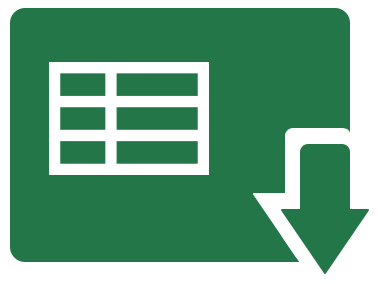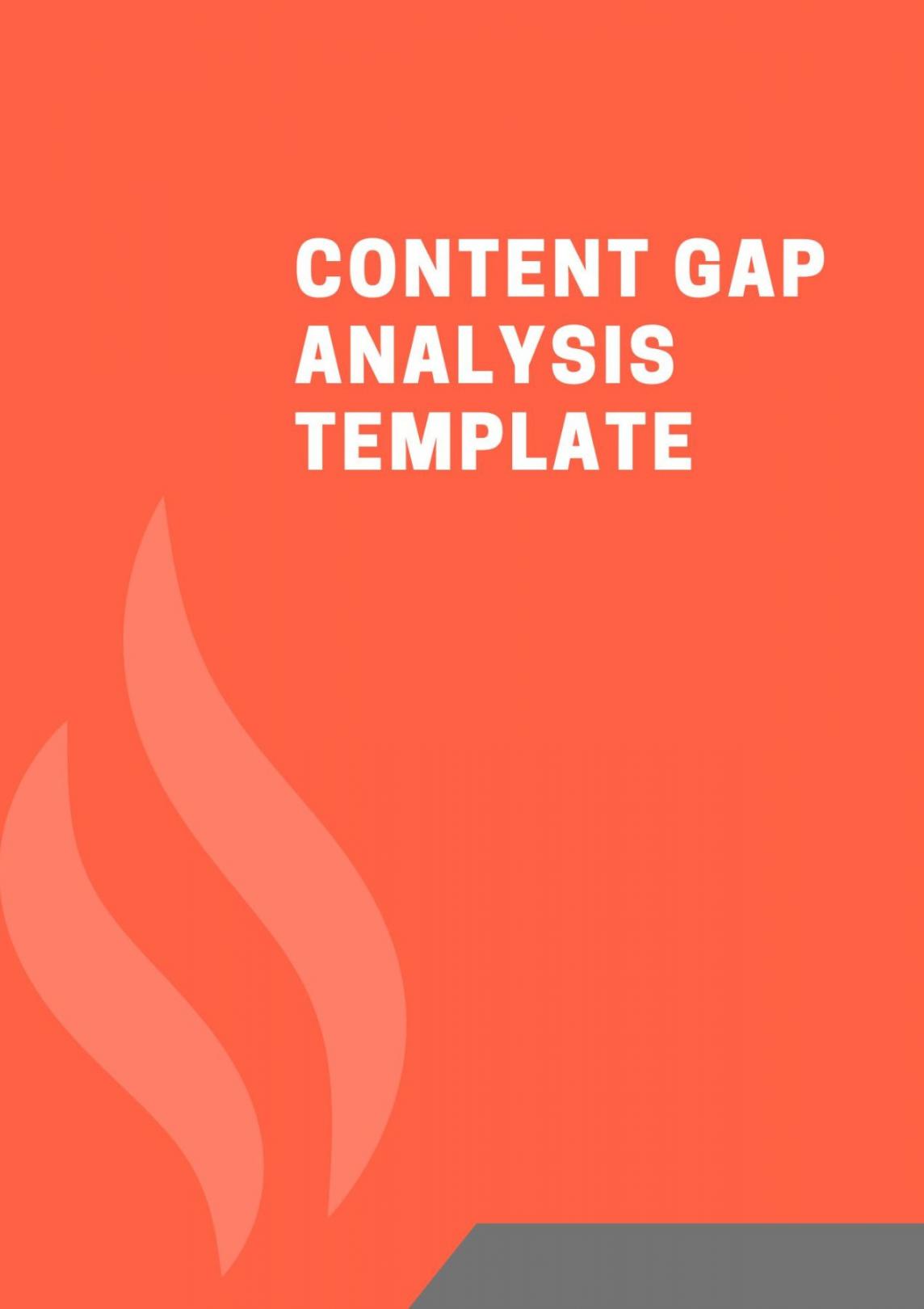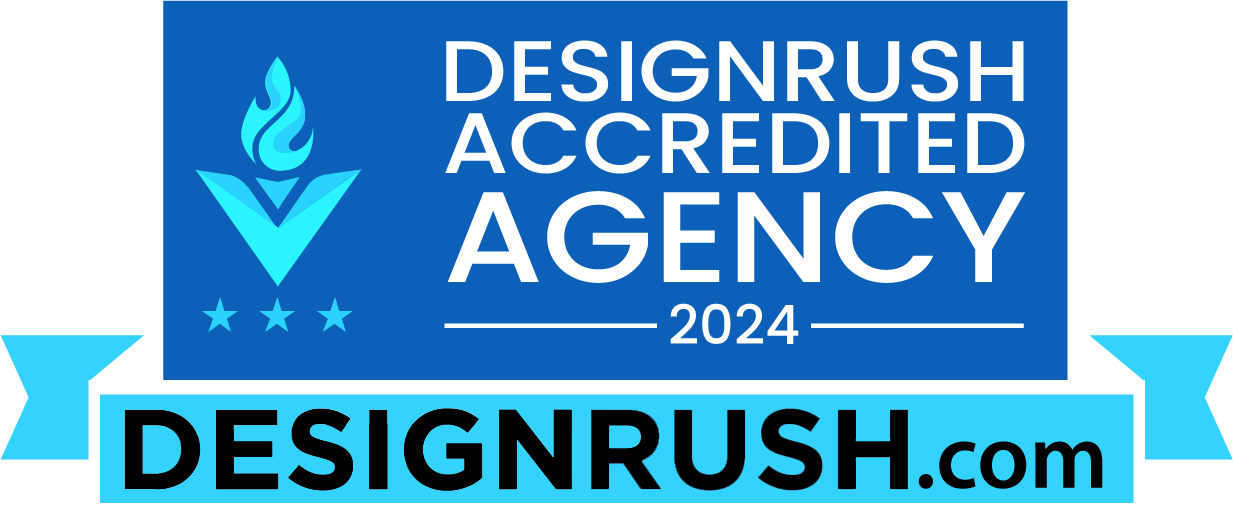What are Blog Posts and Why Are They Important?
Simply stated, blog posts are articles that you publish on your own blog.
These are typically around specific topics and themes, based on what your blog is about and your target audience.
If you publish high-quality, relevant content that follows SEO best practices, it will rank high on Google SERP and get tons of organic traffic.
Here are some reasons why you should invest in creating high-quality blog posts:
- In-depth blog posts on relevant topics in your industry can help you establish your expertise.
- Useful and relevant content that’s optimized for keywords can help you generate organic traffic.
- If you consistently create great content on specific topics, you will build a loyal audience base.
- By writing informative posts about your products or services, you can nurture leads and drive sales.
- You can use in-depth blog posts to promote affiliate products or services and earn commissions.
However, to achieve these results you need to frequently and consistently produce high-quality blog posts and that’s not easy. That’s where our free blog post template can help.
Get The Free Template Now!
Why Do You Need a Blog Post Template?
Creating relevant, high-quality, SEO-friendly blog posts regularly and consistently is no easy task. It requires careful planning and perfect execution, as it is a critical part of any SEO content strategy.
With our free blog post template, you will get a basic structure of all the important elements to include in your posts. This will save you time and effort.
Our free blog post template will:
- Give you a comprehensive list of things to include in your blog posts.
- Help you create high-quality blog posts in less time and with less effort.
- Tell you how to structure your blog posts to get the best results.
- Provide you with a framework that can help maintain consistency.
- Make your life easier by streamlining the content creation process.
Use our free blog post template to alleviate your content creation woes, save time and effort, and create high-quality content.
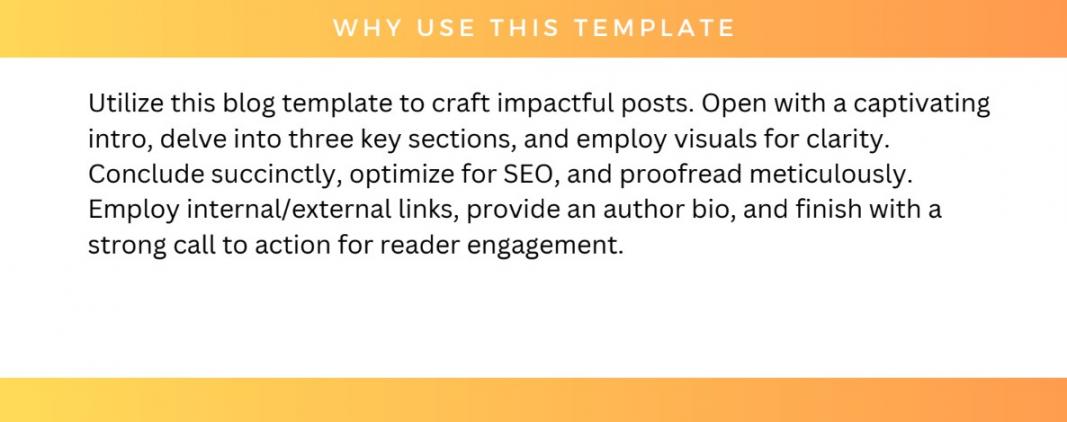
Download Free Template!
What’s Included in This Blog Post Template?
This simple blog post template is designed to help you craft engaging blog posts with less time and effort.
1. Structure and Framework
The most important part of this blog post template is that it provides a framework for creating blog posts.
From a well-written intro to various headings and subheadings, each element is important to provide a good reading experience to your audience. Using this blog post template, you will be able to properly structure your blog posts to improve readability and scannability.
Here are some key elements of the basic blog post structure:
- Title
- Introduction
- Main H2 headings
- H3 subheadings
- Visual content
- Conclusion
2. Key Things to Include
Apart from the basic structure, there are other key elements you must include in your blog posts.
This blog post template will remind you of all the things you should include and tell you how to do it right. You will find tips for each section and some bonus tips as well.
Here are some important elements to include in a blog post:
- Meta title
- Meta description
- Internal links
- External links
- Target keywords
- Calls to action
- Author bio
3. Tips to Create In-Depth Content
Great blog posts are well-researched, data-backed, and cover a topic in depth.
That’s why we have included tips to create great content in our blog post template. This will help you create high-quality content every single time.
Here are some tips to create great content:
- Use a conversational tone to engage your audience.
- Optimize your content for primary and secondary keywords.
- Use proper headings and subheadings for better readability.
- Always proofread your content for clarity, grammar, and spelling.
- Keep paragraphs short and use bullet points for readability.
4. A Sample Blog Post
Despite all the valuable advice we’ve compiled in this blog post template, you may still need help using it to your advantage.
That’s why we have also included a sample blog post. We’ve taken a topic and created a structure and various headings and subheadings to show you how to use this template.
Here’s how this will help:
- You get to see the blog post template in action.
- It gives you an idea of how to structure your posts.
- It helps you understand what kind of visuals to include.
- You get an idea of how to write intro and conclusion sections.
Download the Free Blog Post Template!
Types of Blog Posts You Can Create Using This Template
There are various types of blog posts to choose from, depending on the topic and its search intent. Our free blog post template will help you create different types of blog posts.
Here are five common ones that you can use to get started.
1. How-To Blog Posts
How-to posts are in-depth educational articles that explain a step-by-step process of accomplishing a task.
Here’s a simple template showing the key elements of a how-to post:
- Title: Use a “how-to” title that describes the process you will discuss in your blog post. If it involves a specific number of steps, mention that as well. For example, “How to Conduct an SEO Audit in 5 Easy Steps.”
- Intro: State a problem that anyone searching for a specific topic will relate to and then offer the article as the solution.
- H2 Heading: Use a heading mentioning the number of steps to introduce the list of H3s. Alternatively, you can list the steps as H2s as well.
- H3 Headings: List the steps in the process and provide detailed explanations of each step, along with recommended tools and tips.
- Conclusion: Summarize the key steps involved in the process and end with a call to action.
Here’s an example of the structure of a “how-to” post by Attrock. See, how the post is structured from the table of contents to understand the basic template for this type of blog post.
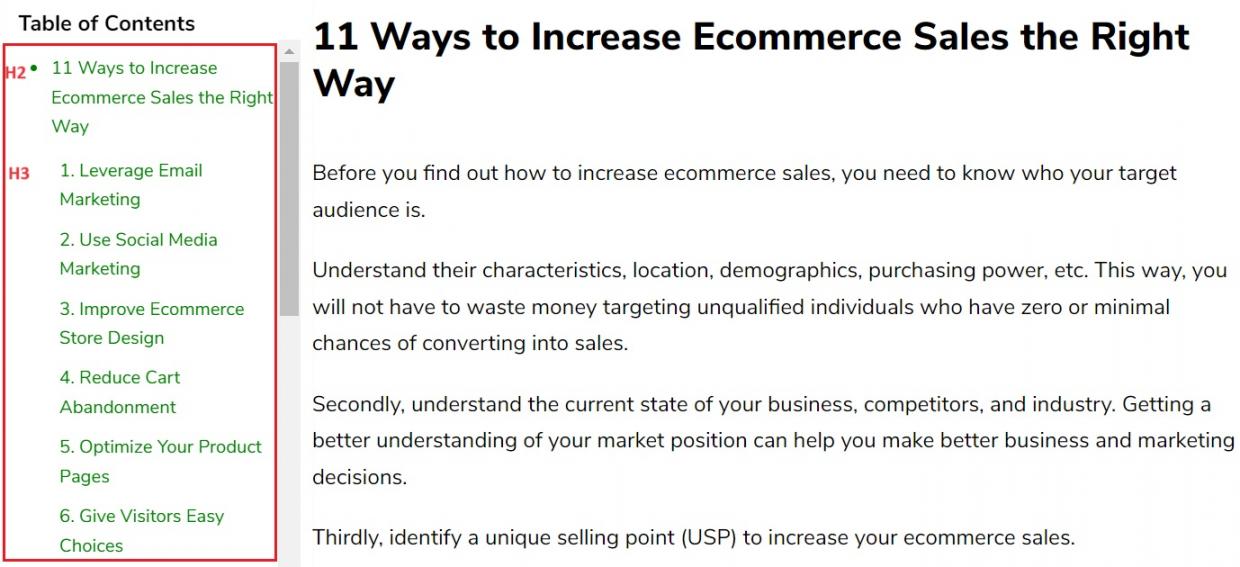
Image via Attrock
2. Listicles or List Posts
These posts contain a list of items, such as a list of tips, strategies, steps, tools, or anything else.
Here’s the basic structure or template of listicle-type posts:
- Title: Use a title that mentions the number of points in the list and what the list is about. For example, “10 Email Marketing Tips for Beginners.”
- Intro: Mention why the reader should read further and what they’ll gain from this list.
- H2 Headings: List the various tips, strategies, or tools you will cover in your blog post.
- Conclusion: Reemphasize why the list is useful and explain how readers should use it, then end with a CTA.
Here’s an example of a listicle published on the Attrock blog.

Image via Attrock
3. Review Posts
As the name suggests, these posts include a detailed review of a product or service. This can be a sponsored review or an honest informational review.
Here are the key elements of a review post:
- Title: Use a title that mentions the name of the product or service being reviewed, the year, and the word “review”. For example, “Semrush Review 2023: Is It the Right Tool For Your Business?”
- Intro: Introduce the product or service and state the need for a review post to help readers choose the right product or service.
- H2 Headings: You can use several H2 headings to cover various aspects of reviewing a product or service. This can include who should use it, a review of key features, pricing plans, and more.
- H3 Headings: For each H2, the H3 headings can be used to expand on the points and provide more in-depth information. For example, the H3s for the H2 “Pricing Plans” can cover the various plans as H3s.
- Conclusion: Give a final verdict of whether the reader should choose the product or service being reviewed.
Here’s an example of a detailed review post by Attrock.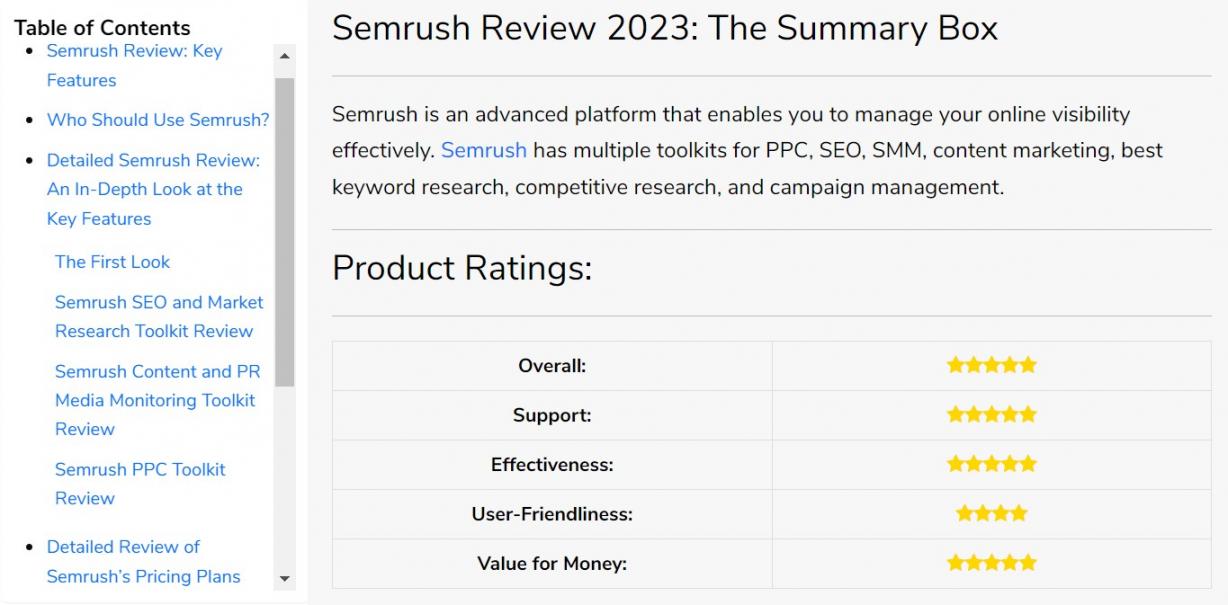
Image via Attrock
4. Tool Comparisons
This is similar to a review post, except it covers two or more products or services and provides a detailed comparison.
Here is the basic template for comparison posts:
- Title: Write a title that mentions the names of products or services being compared and the word “comparison” to clearly communicate what the post is about.
- Intro: Introduce the product or services and what they’re well known for. Explain the need for a comparison and how the post will help the readers make a choice.
- H2 Headings: Like a review post, this can also have several H2 headings, comparing the various options on different parameters.
- H3 Headings: The H3 headings for each section will review each option on a specific parameter.
- Conclusion: This should have a final verdict on which product or service you recommend.
Here’s an example of a comparison post that compares 10 online video makers.
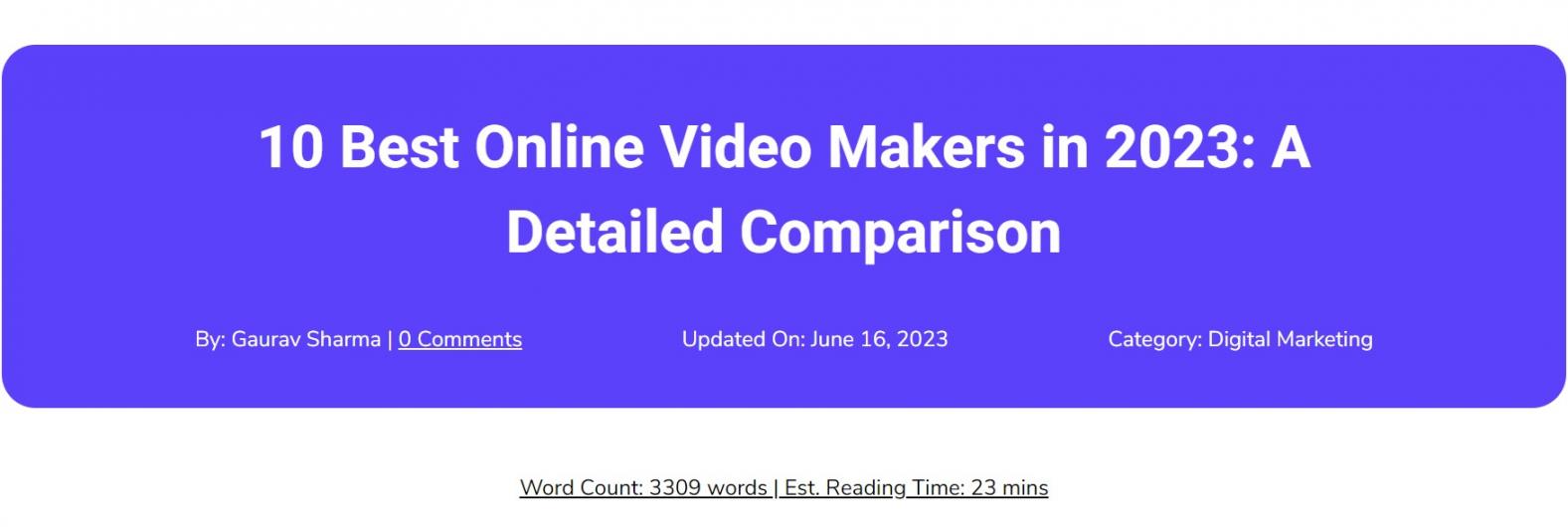
Image via Attrock
5. Expanded Definition Posts
These deal with the “what” questions and explain a concept or topic in detail. These are typically long-form, educational, pillar blog posts.
Here’s the expanded definition blog post template you can follow:
- Title: The titles for such posts include the word “what is” followed by the topic or concept that will be explained in detail. For example, “What is Link Building?”
- Intro: Introduce the basic concept, bust a myth related to it, or mention why people get confused with the topic and why it needs further explanation.
- H2 Headings: Though these topics cover the “what” aspect in detail, they also feature the “why” and “how” part of things. You may even include sections on “types” or “tips”, depending on the topic.
- H3 Headings: As always, the H3s will cover the subtopics within each section and may include multiple points.
- Conclusion: Such posts are great as pillar content, so you can use the conclusion to suggest related topics for further reading.
Here’s an expanded definition post by Attrock. Check out the H2s and H3s to see how the topic is explained and all important aspects are covered.
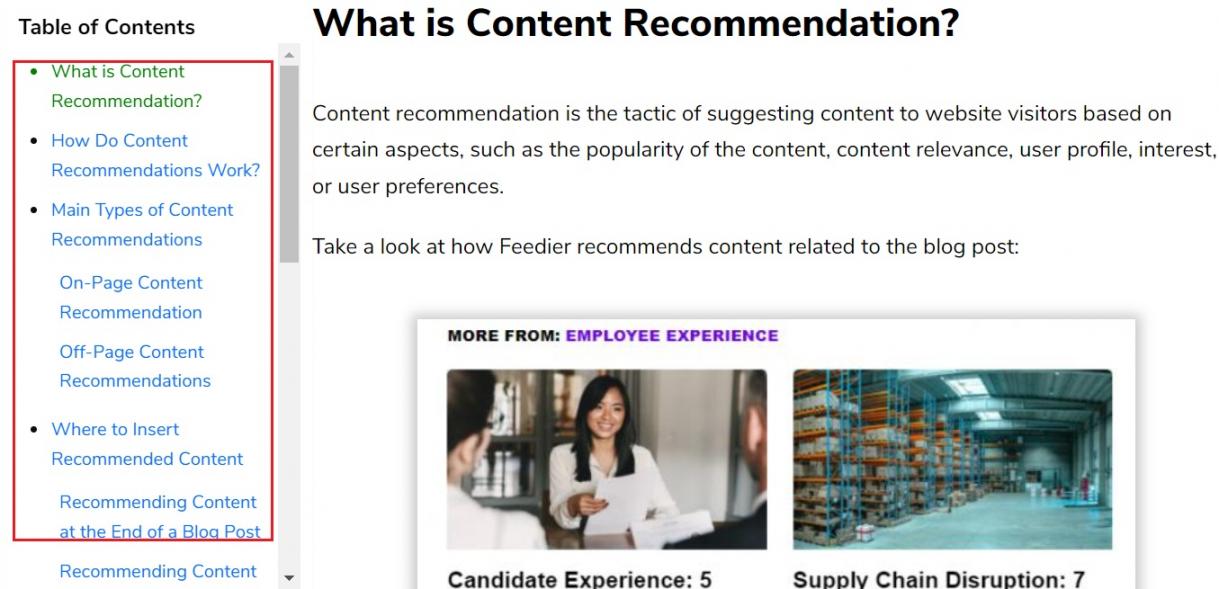
Image via Attrock
How to Use This Blog Post Template
This free blog post template is really easy to use. Here’s a step-by-step guide:
- Download the template using any of the CTA buttons on this page.
- Find all the elements to include in a blog post and copy them into a doc.
- Create content for each section based on the tips provided in the template.
- Make sure you’ve added all elements and implemented all the tips.
- Thoroughly review and proofread your content and publish it on your blog.
Download the Blog Post Template!
FAQ
Q1. What is a blog post template?
A. A blog post template is a framework that you can use to create high-quality, in-depth blog posts consistently. It provides you with a comprehensive list of things to include in your blog posts and tips on how to do it right.
Our free blog post template also provides a sample and bonus tips to help you elevate your content to the next level.
Q2. Why should I use a blog post template?
A. A pillar blog post template can help you save time and effort by giving you a framework you can use to create different types of blog posts. Irrespective of the topic, the basic anatomy of a blog post remains similar and a blog post template provides you with exactly that.
Having a template at hand makes it easier for the writers to make a blog post outline. It also ensures that they don’t miss anything important and properly structure the posts.
Q3. How do I structure a blog post?
A. You can our free blog post template to structure all types of blog posts. Here is a basic structure that you should follow:
- Title: This will depend on the type of post and the topic being covered. It should be between 50 and 60 characters in length.
- Intro: This is a short and compelling section that introduces the topic or states the challenge that a reader is facing and then encourages them to read further.
- H2 Headings: These are the main subtopics you want to discuss to cover the topic in depth.
- H3 Headings: These are optional subheadings you can use to further enrich each H2 section. Depending on the topic of your post and the word count, you may or may not need these.
- Conclusion: This is a short section that summarizes the key points discussed in the post and often ends with a call to action.
Apart from the basic structure, you should also use visuals and bulleted lists to make your content more engaging.
Q4. How can I create in-depth blog posts?
A. Here’s the step-by-step process you can follow to write in-depth blog posts:
- Conduct topic and keyword research to choose a relevant topic and the primary and secondary keywords you want to target.
- Do SERP research to study the top-ranking posts on the topic and prepare an outline covering all important subtopics.
- Create better and more in-depth content than the top-ranking posts on the topic. Conduct a separate search for each subtopic and cover those in depth.
- Use statistics and examples to prove your points and lend more credibility to your blog posts.
- Add visuals that explain key concepts or add some value to the content, while also improving readability.
- Optimize your content by adding the primary and secondary keywords to it.
- Add relevant external and internal links to direct your readers to other useful content and resources.
- Proofread the blog post for grammatical errors and readability and then publish it on your blog.
You can use free blog post templates to streamline the process and save time.
Q5. How frequently should I publish content on my blog?
A. There is no definite answer to this question as that depends on how much time and resources you have. Generally speaking, posting one in-depth blog post every week is good enough instead of publishing several shallow content pieces.
But if you have the resources to post more frequently, you can do so. Just remember to have a consistent publishing schedule and post on fixed days and times. This helps you build a loyal audience who will expect new content on certain days of the week.
Ready to Create Top-Ranking Blog Posts for Your Blog?
Use this free blog post template to streamline your content creation process and get consistently great results every single time.


